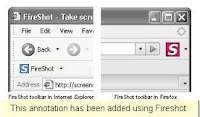Curious to know what technologies, affiliate networks, advertising networks and analytical tools your competitors use for their websites? Check Sitonomy.com to analyze and optimize your own.
 Sitonomy is a free service that allows developers and designers to find out which technologies are used in a specific blog/site. It also provides a list of the top affiliate networks, advertising networks, analytical tools that you can consider trying out based on the data mined through Sitonomy's analysis of websites.
Sitonomy is a free service that allows developers and designers to find out which technologies are used in a specific blog/site. It also provides a list of the top affiliate networks, advertising networks, analytical tools that you can consider trying out based on the data mined through Sitonomy's analysis of websites.
Also see: Tools to monitor your website
 Sitonomy is a free service that allows developers and designers to find out which technologies are used in a specific blog/site. It also provides a list of the top affiliate networks, advertising networks, analytical tools that you can consider trying out based on the data mined through Sitonomy's analysis of websites.
Sitonomy is a free service that allows developers and designers to find out which technologies are used in a specific blog/site. It also provides a list of the top affiliate networks, advertising networks, analytical tools that you can consider trying out based on the data mined through Sitonomy's analysis of websites.Also see: Tools to monitor your website




